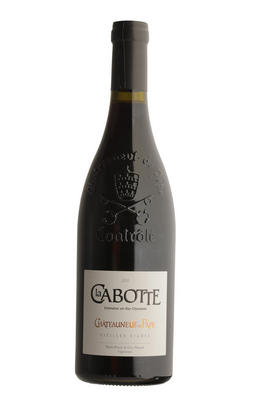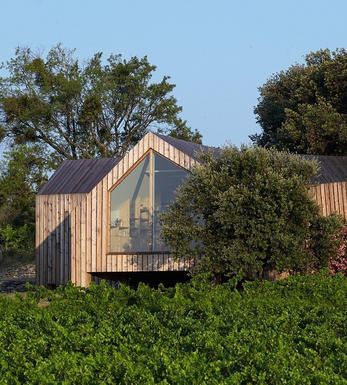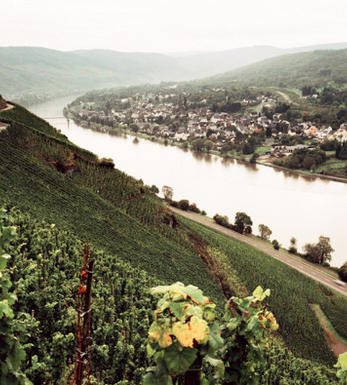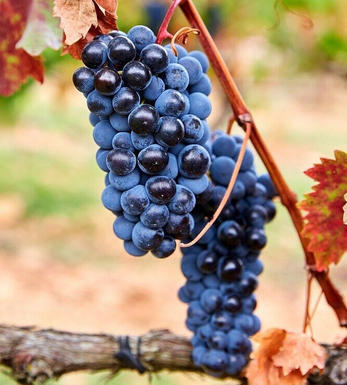
2020 Châteauneuf-du-Pape Rouge, Vieilles Vignes, Domaine la Cabotte, Rhône

Critics reviews
Grenache, Mourvèdre, Syrah, Cinsault, Clairette, Vaccarèse, Counoise.
Very restrained. Full-bodied, complex, intriguing mineral, savoury edge. Has a lovely purity of fruit allied with floral notes. Voluptuous on the palate. Fine line of acidity and refined mineral edge to finish. Lovely, restrained Châteauneuf.
Drink 2023 - 2030
Andy Howard MW, JancisRobinson.com (March 2022)
Drawn from the lieux-dits of Chapouin and Palestor, the 2020 Chateauneuf du Pape Vieilles Vignes is mainly Grenache planted in 1929 and 1936, with small amounts of Mourvèdre, Syrah, Cinsault, Counoise, Vaccarese, Grenache Blanc and Clairette. One-third is aged in older barrels, with the rest in stainless-steel tanks, allowing for ample purity, with hints of green herbs (stems?) against a backdrop of black cherries and red raspberries. Full-bodied, supple and velvety on the finish, it's a head-turning charmer.
Drink 2022 - 2035
Joe Czerwinski, Wine Advocate (September 2023)
The 2020 Châteauneuf Du Pape Vieilles Vignes is outstanding, revealing a great nose of darker, almost blue fruits as well as liquorice and peppery herbs, with lots of ripe Grenache character. Medium to full-bodied on the palate, it’s nicely balanced, has good mid-palate density, and ripe tannins, all pointing to a solid 7-8 years, if not a decade, of prime drinking.
Jeb Dunnuck, JebDunnuck.com (November 2022)
About this WINE

Domaine la Cabotte
Purchased in 1981 and owned by the Plumet family ever since, the domaine has grown from 10 to 30 hectares of vines, with an additional 12 hectares coming on-stream this year, and 1.5 hectares in Châteauneuf-du-Pape. It is certified organic and farmed biodynamically. The mainly limestone and sand soils of the plateau of the Massif d’Uchaux are very poor in nutrients. This enables them to produce wines of real finesse and elegance in comparison to those from neighbouring appellations. Eric and Marie-Pierre Plumet believe that managing the environment around the vineyard is essential for a site’s health – from maintaining their 15 hectares of forest, to regulating water and the influence of wind, to promoting biodiversity. Son Etienne has been part of the team here for the past few years and is taking biodynamic innovations forward with his parents. Across the board, their wines are pure, mineral and fine.
The 2021 vintage was just as challenging for this domaine as it was for their neighbours, however, here Etienne talks of how their biodynamic approach saved them. He states that, after spraying vines that were 40% frosted with a valerian tea-infusion, the grapes recovered, leaving only 5% final damage. The freshness of 2021 is hugely complementary to Cabotte’s beautiful purity of style. These are wines with great ageing potential, especially La Sauvageonne. Etienne recently tasted a vertical of this wine from the last decade and each one was fresh as a daisy. The Colline Blanc is from the warmer and more fruit-forward 2022 vintage which Eric and Marie-Pierre describe as “one beautiful vintage in the making”.

Côtes du Rhône Villages
A clear step up from basic Côtes du Rhône in terms of both quality and price, the Côtes du Rhône Villages appellation covers an area of 5,700 hectares entirely within the Southern Rhône. About 15 percent of the size of its generic counterpart, it offers mostly excellent, very good value wines from all three hues that are more serious, concentrated and interesting.
Red wines dominate, made up of a minimum 50 percent Grenache, at least 20 percent Syrah and Mourvèdre, and no more than 20 percent from 10 other named varieties. Out of 95 communes that are eligible to use the Villages name, the finest 18 of them have the right to append their village name, as long as the wine is exclusively from that commune. The classification is quite fluid though, with Gigondas, Vacqueyras, and Beaumes de Venise and Vinsobres and Rasteau having been upgraded to AOC status, and other villages like Massif d’Uchaux and Plan de Dieu being added.
Best enjoyed from two to 10 years of age, the best wines probably come from Cairanne and Sablet, but all are well worth a look. The whites are rapidly improving and are delicious in their first three years. Rosé wines are made from the same cépage as the reds and are usually very good.
Recommended Producers: Chapoton, Domaine Cros de la Mûre, La Soumade

Southern Rhône Blend
The vast majority of wines from the Southern Rhône are blends. There are 5 main black varieties, although others are used and the most famous wine of the region, Châteauneuf du Pape, can be made from as many as 13 different varieties. Grenache is the most important grape in the southern Rhône - it contributes alcohol, warmth and gentle juicy fruit and is an ideal base wine in the blend. Plantings of Syrah in the southern Rhône have risen dramatically in the last decade and it is an increasingly important component in blends. It rarely attains the heights that it does in the North but adds colour, backbone, tannins and soft ripe fruit to the blend.
The much-maligned Carignan has been on the retreat recently but is still included in many blends - the best old vines can add colour, body and spicy fruits. Cinsault is also backtracking but, if yields are restricted, can produce moderately well-coloured wines adding pleasant-light fruit to red and rosé blends. Finally, Mourvèdre, a grape from Bandol on the Mediterranean coast, has recently become an increasingly significant component of Southern Rhône blends - it often struggles to ripen fully but can add acidity, ripe spicy berry fruits and hints of tobacco to blends.


Buying options
Add to wishlist
Description
Made from 100% Clairette and vinified in six different amphorae for ten months, La Sauvageonne is a unique wine. It is multi-layered and intensely mineral: incredibly delicate notes of pear build in tandem with a stratum of freshly hoed earth and a hint of bitter fennel. Despite its subtlety and restraint, this is brimming with energy – and will age beautifully.
Drink 2022 - 2030
Catriona Felstead MW, Senior Buyer, Berry Bros. & Rudd
wine at a glance
Delivery and quality guarantee